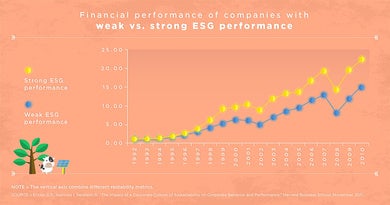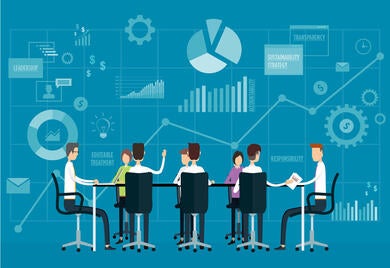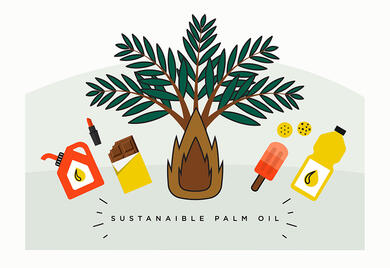
Solar energy: The revolution spurring development in Honduras
When Invema plant, the main plastic recycler in Honduras starts operating, a success formula resonates. It is one of the commercial companies that took advantage of the photovoltaic energy boom in the country. Its case demonstrates how the private sector’s investment in solar energy can facilitate greater economic and sustainable development for the country. Six years ago, the executives of the firm decided to install solar panels in the company, so it could generate its own power. This initiative promised a 20% reduction in energy consumption as well as a significant reduction in greenhouse gases emissions of polluting gases. And so it was. Today, Invema obtains energy savings up to 30% in electricity and reinvests in the focus of its business, recycling, so much so that it is now manufacturing the bottles that Coca-Cola uses in Central America. “We are very proud, because thanks to the solar panels, IDB Invest’s doors/channels opened up and allowed us to make the investments we dreamed,” says George Gatlin, the manager of Invema, which is located in the northern city of San Pedro Sula. Invema is part of many companies and private consortia that have opted for photovoltaic energy since Honduras decided to reform its electricity subsector to revert its electricity matrix from thermal to renewable. The reforms began in 2012, when generation using fossil fuels accounted for 70% compared to 30% for renewables. This thermal hegemony was reflected in increasing oil billing, carbon dioxide emissions, high tariffs up to US$0.30 per kilowatt (KW) produced, and frequent rationing. Following the reforms, led by the government with the advisory services of the Inter-American Development Bank (IDB), there was an upsurge in renewable energy until the energy matrix was completely reversed compared to 2012. The latest report from the Central Bank of Honduras (BCH) in 2018 records a 75% electricity generation based on renewable sources, and an 11% share of photovoltaic energy. This percentage translated into 433 megawatts (MW) of installed capacity at the end of 2016, placing Honduras in the lead of solar generation in Central America and third in Latin America, after Chile and Mexico. “We are witnessing a revolution in the electricity sector, not just in Honduras, but worldwide, because energy storage is changing the concept, points out Carlos Jácome, IDB energy specialist who has participated in the reforms process in Honduras. “The Bank support comprises studies and soft financing. Later, the savings make it possible to improve the productivity of these companies because they can use what they no longer pay in energy to expand their businesses,” comments Jácome. Since 2012, the IDB and IDB Invest have provided technical assistance to Honduran commercial, industrial, and institutional sectors to investigate the technical and financial feasibility of photovoltaic projects. To date, 22 studies have been completed for projects ranging from 40 kilowatts (kW) to nearly 3 MW of installed capacity. Official reports indicate that interest in photovoltaic projects have increased due to a reduction in about 40% of the installation costs over the last five years. Behind this innovation there are three combined components that have resulted in a successful formula: i) the impetus of government that created favorable conditions for investment; ii) the decisions made by entrepreneurial companies; and iii) the IDB’s ability to evaluate and finance the projects. The initial investments in photovoltaic development in Honduras involved a shared risk for IDB Invest and its clients. Nonetheless, what made the difference is the technical capabilities of the Bank for evaluating and support for this type of investments. The Honduran experience encourages entrepreneurship and new markets while demonstrating that IDB Invest is the partner of choice for innovative markets. Experiences of this kind should be replicated in the region. The first photovoltaic investments began in 2015, when 388 MW were installed, followed by 45 MV more in 2016, according to reports from the National Electrical Energy Company (ENEE). According to the ENEE, the Honduran commercial and industrial solar energy market is quite different from what it was in 2012, starting with changes in electricity billing (between 11 and 18 cents per kW per hour), installation costs for panels, legal regulations, and the availability of photovoltaic manpower in the region. In addition to this, national capacities have developed with the installation and administration of photovoltaic projects. “Before, if a Canadian, Spaniard or a Costa Rican person did not show up to supervise the project it didn’t move forward. Now the Hondurans themselves have been strengthening all these positions. There is a friendly environment for investment,” notes Elsia Paz, President of the Honduran Renewable Energy Association (EHER), one of the entities that emerged in the context of these reforms. Download the full story here: “Solar Energy: The Revolution Spurring Development in Honduras” Subscribe to receive more content like this! [mc4wp_form]

Sustainability boosts agribusinesses
The gap between companies that do only what is essential in managing sustainability versus those who are already capturing its benefits could soon become an irreversible gap that buries some but catapults others.

Sustainability makes business sense
Far from being a burden, sustainability is a business opportunity, allowing companies to ensure their continuity and positioning and making them more efficient and profitable.

Corporate governance: A pathway to sustainability strategy
Good corporate governance is fundamental for the sustainable development of the region.

Supporting sustainable palm oil in Latin America and the Caribbean
African palm oil accounts for the bulk of vegetable oil sales in the world, and it is estimated that demand for this oil will grow significantly in the near future. But how is palm oil used? Although many of us are unaware of all its potential uses in industry, we use palm oil daily in a great variety of products, such as processed foods (ice creams, cookies, spreads, etc.), cosmetics, and automobile fuel. Review the labels on the products you use frequently and you will be surprised.

Can your company be a sustainability champion?
Long-term financial performance is directly proportional to good governance, environmental stewardship and social responsibility, but you probably already knew that. If so, then you should also be able to prove it and measure it, because nowadays a vision is not enough to convince your clients. “What gets measured gets managed.”- Peter Drucker (known as the father of modern management) The Problem What if I tell you that purpose is not enough and that measurement encourages ambition? When I look back to my early school days I remember some of the —silly, but edifying— competitions with my friends and classmates. The range of our “high-performance rivalries” went from copying text from the chalkboard into our notebooks in the fastest possible time, comparing math grades at semester end, scoring backheel goals in a soccer match and much more. Measuring and comparing records was the motivation for continuous improvement to beat my own achievements and those of my fellow mates. But what does that have to do with sustainability? Everything. Measuring progress using a comprehensive yet meaningful list of indicators is the core foundation to turn sustainability into a competitive advantage. The Solution: Measuring, reporting, disclosing. Year after year more corporations perceive the competitive edge existent in being part of a sustainability rating and index. According to the Governance & Accountability Institute, 82% of S&P 500 Companies published Corporate Sustainability reports in 2016. In this context a sustainability index is a barometer to measure the success level of a company. It acts not only as an MRI to detect environmental, social and governance issues, but also indicates the economic relevance of sustainability parameters for corporate management and investors. But we need to go further. A recent report from KPMG on corporate responsibility and sustainability indicates that simply linking corporate responsibility activities thematically to the United Nations Sustainable Development Goals (SDGs) is not enough. People want to know how companies are contributing to achieve the goals, and what is the actual impact. Not only does civil society want this information, but also several large institutional investors are exploring how to align their investment approaches with the SDGs. This is why full transparency and full disclosure are key. The economic relevance of sustainability parameters for corporate management and investors are manifold. A study by the University of Oxford showed impressive results on how disclosing sustainability practices can drive financial outperformance. For example, 90% of the studies on the cost of capital indicate that sound environmental, social and governance (ESG) standards lower the cost of capital of companies. If only there were a specific tool for companies in Latin American and the Caribbean to measure and compare performance of environmental, social and governance (ESG) indicators…THERE IS. IndexAmericas IndexAmericas is the world’s first sustainability index exclusive to Latin America and the Caribbean region. Created by the IDB Group (Inter-American Development Bank and IDB Invest) in partnership with Thomson Reuters, S-Network Indexes and Florida International University, IndexAmericas recognizes the top 100 publicly traded companies operating in the region and leading the way in sustainability. It also identifies the top 30 sustainable companies headquartered in the region. IndexAmericas focuses on four key dimensions: environment, society, corporate governance and development (ESGD). Different from other sustainability indexes, IndexAmericas assesses publicly data rather than using a self-assessment questionnaire. It is a management tool that measures more than 400 ESG indicators and 15 IDB Group proprietary key development indicators to evaluate corporate sustainability. I think professor Peter Drucker would be proud to see this achievement. Want to learn more? Visit IndexAmericas [gallery type="slideshow" size="full" link="none" ids="8440,8441,8443,8442"] Subscribe to receive more content like this! [mc4wp_form]